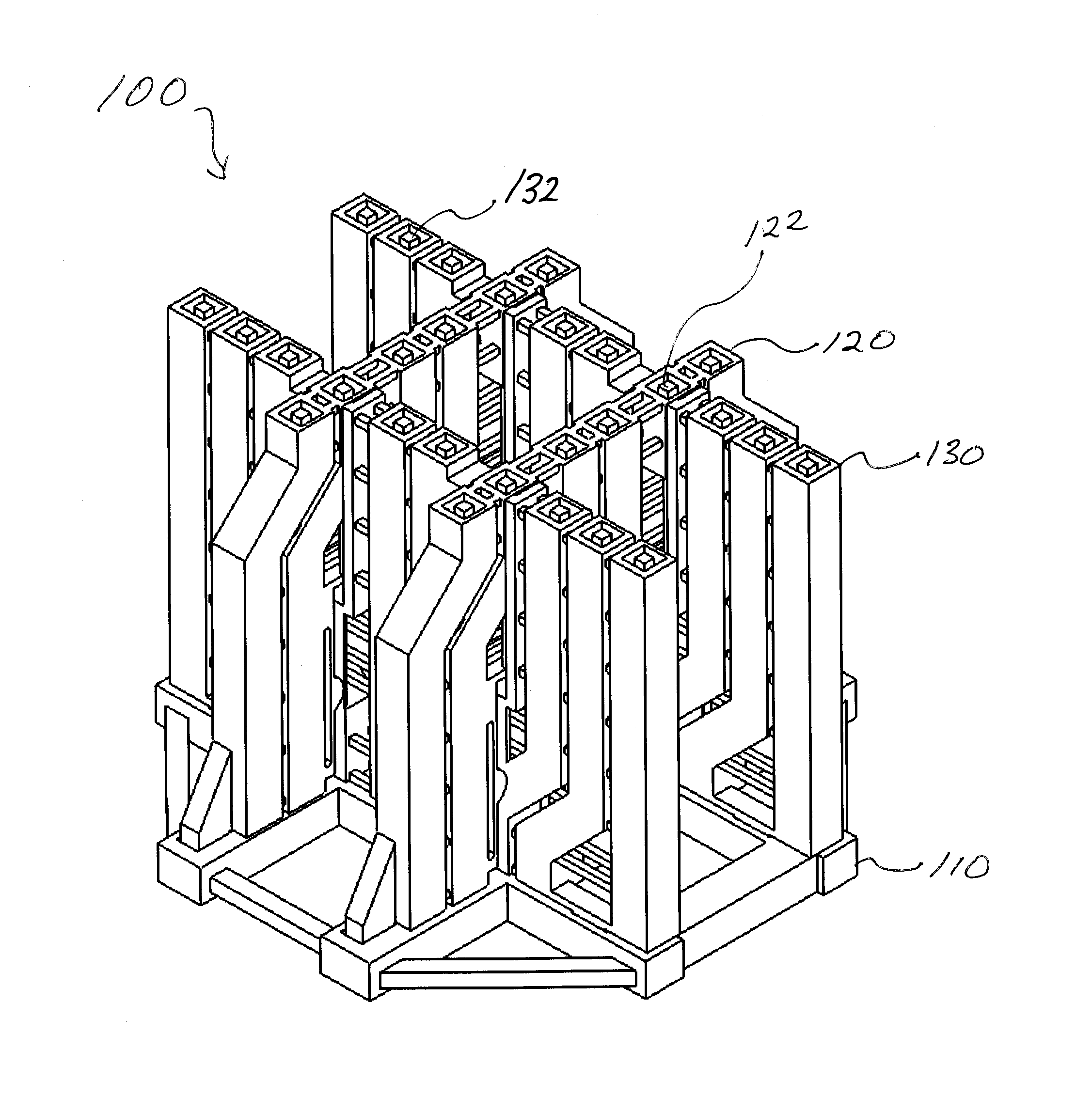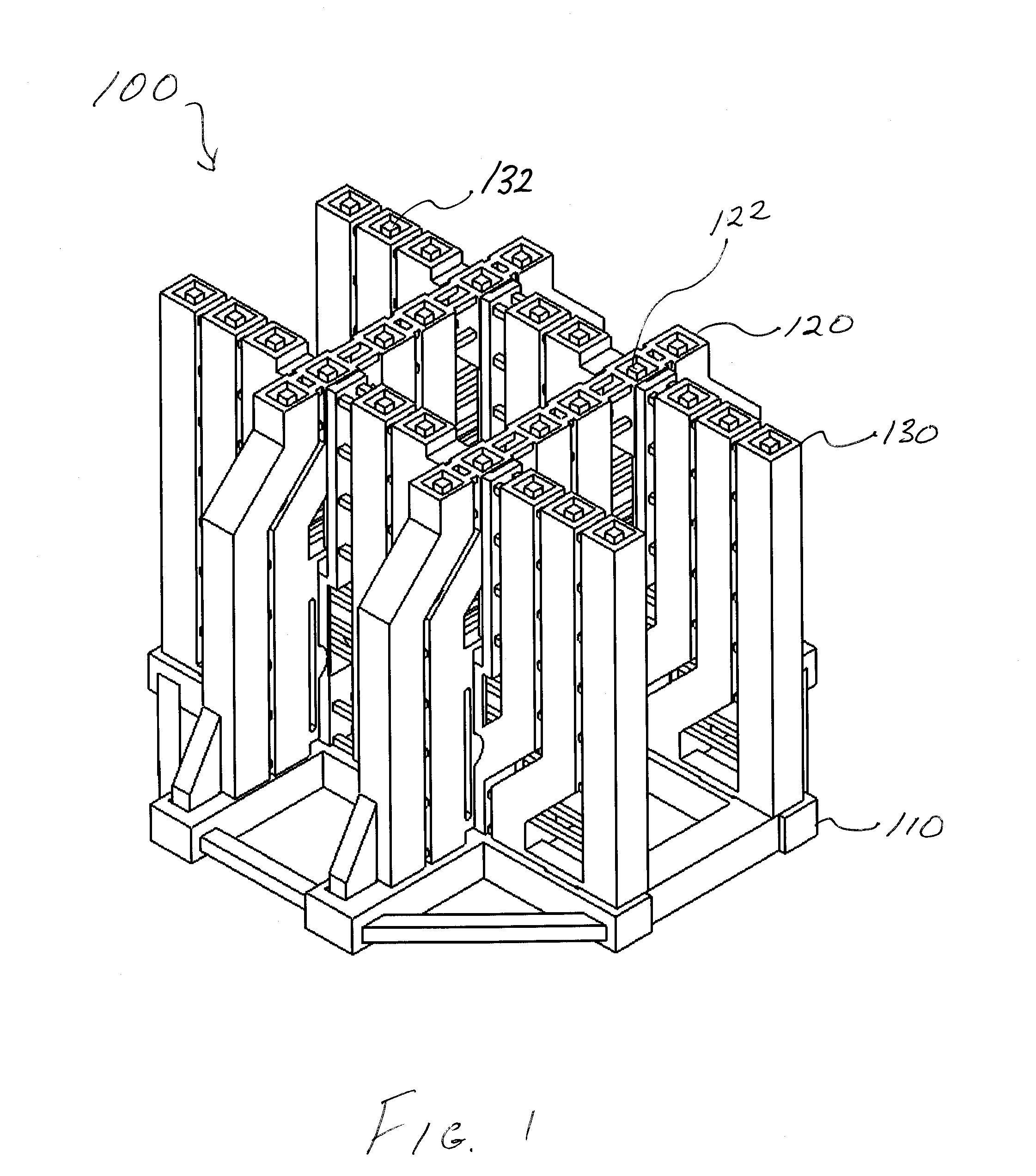Substrate-free interconnected electronic mechanical structural systems
a mechanical structure and electronic technology, applied in the direction of multiple connection subassemblies, circuit arrangements on conductive chasis, waveguides, etc., can solve the problems of less straightforward systems, similar but larger volume, and the desktop computer industry, so as to eliminate the intended functions of the system and eliminate unnecessary impediments to access
- Summary
- Abstract
- Description
- Claims
- Application Information
AI Technical Summary
Benefits of technology
Problems solved by technology
Method used
Image
Examples
Embodiment Construction
[0041]Referring now to the figures, wherein like elements are numbered alike throughout, FIGS. 1 and 2 schematically illustrate isometric views of an exemplary substrate-free, interconnected electronic mechanical structural system 100 (FIG. 1) in accordance with the present invention, in both assembled and exploded views, respectively. The interconnected electronic mechanical structural system 100 may include first and second substrate-free, electronic subsystems 120, 130 and a substrate-free, electronic base plate 110 each of which may include electronic components, such as coaxial waveguides 112 (FIG. 2), 122, 132, (FIG. 1) as well as mechanical connection features, such as complementary mating slots 126, 136, and mounting pegs 124, 134 with complementary mounting holes 114, for example, FIG. 2. The mechanical connection features, e.g., slots 126, 136, pegs 124, 134, and holes 114, may be configured to permit the substrate-free, electronic subsystems 120, 130 and base plate 110 to...
PUM
 Login to View More
Login to View More Abstract
Description
Claims
Application Information
 Login to View More
Login to View More - R&D
- Intellectual Property
- Life Sciences
- Materials
- Tech Scout
- Unparalleled Data Quality
- Higher Quality Content
- 60% Fewer Hallucinations
Browse by: Latest US Patents, China's latest patents, Technical Efficacy Thesaurus, Application Domain, Technology Topic, Popular Technical Reports.
© 2025 PatSnap. All rights reserved.Legal|Privacy policy|Modern Slavery Act Transparency Statement|Sitemap|About US| Contact US: help@patsnap.com



